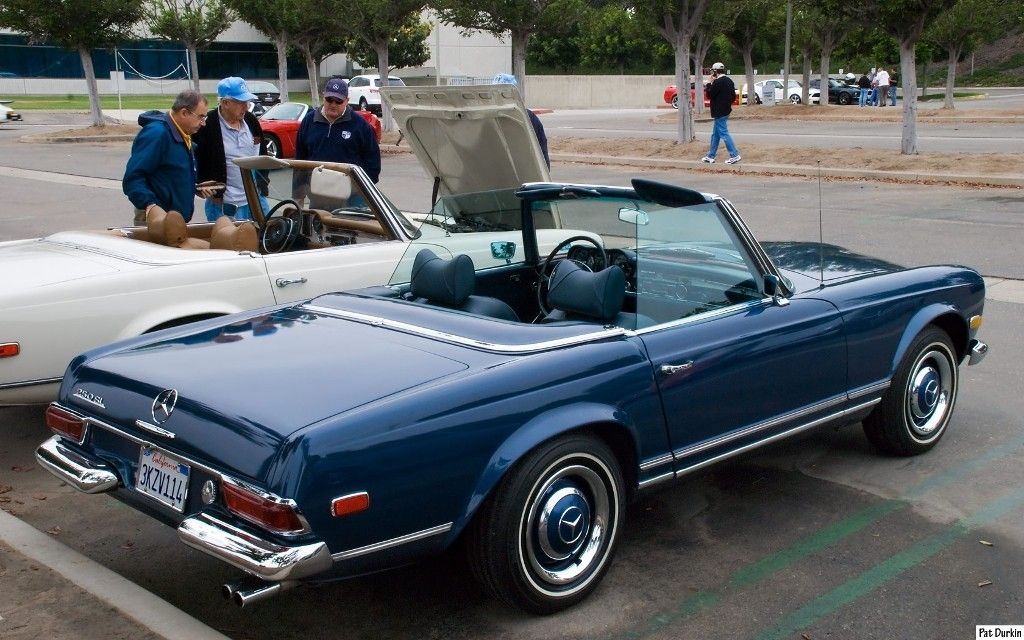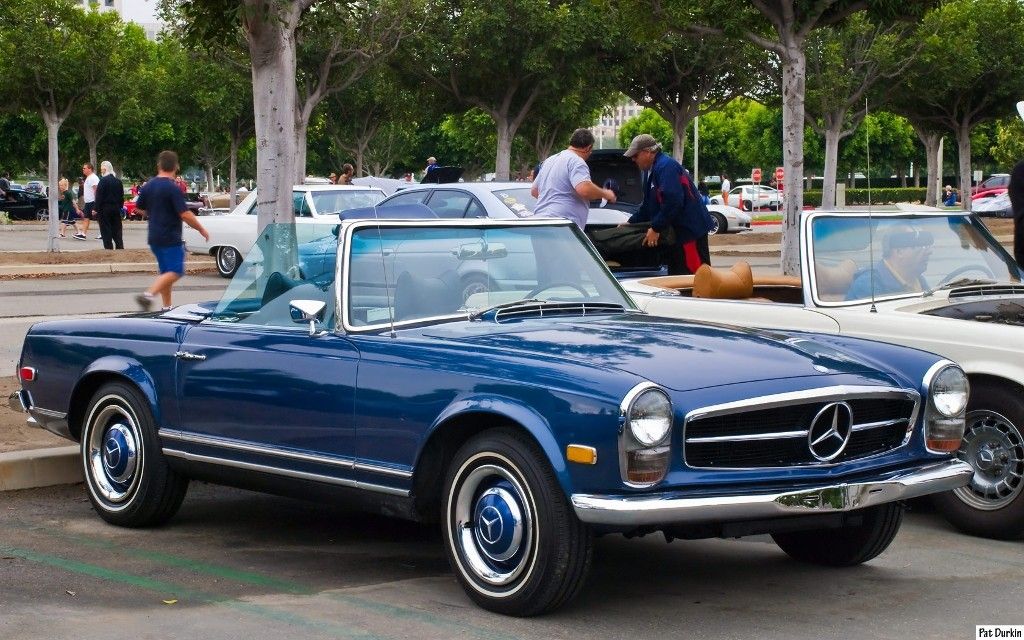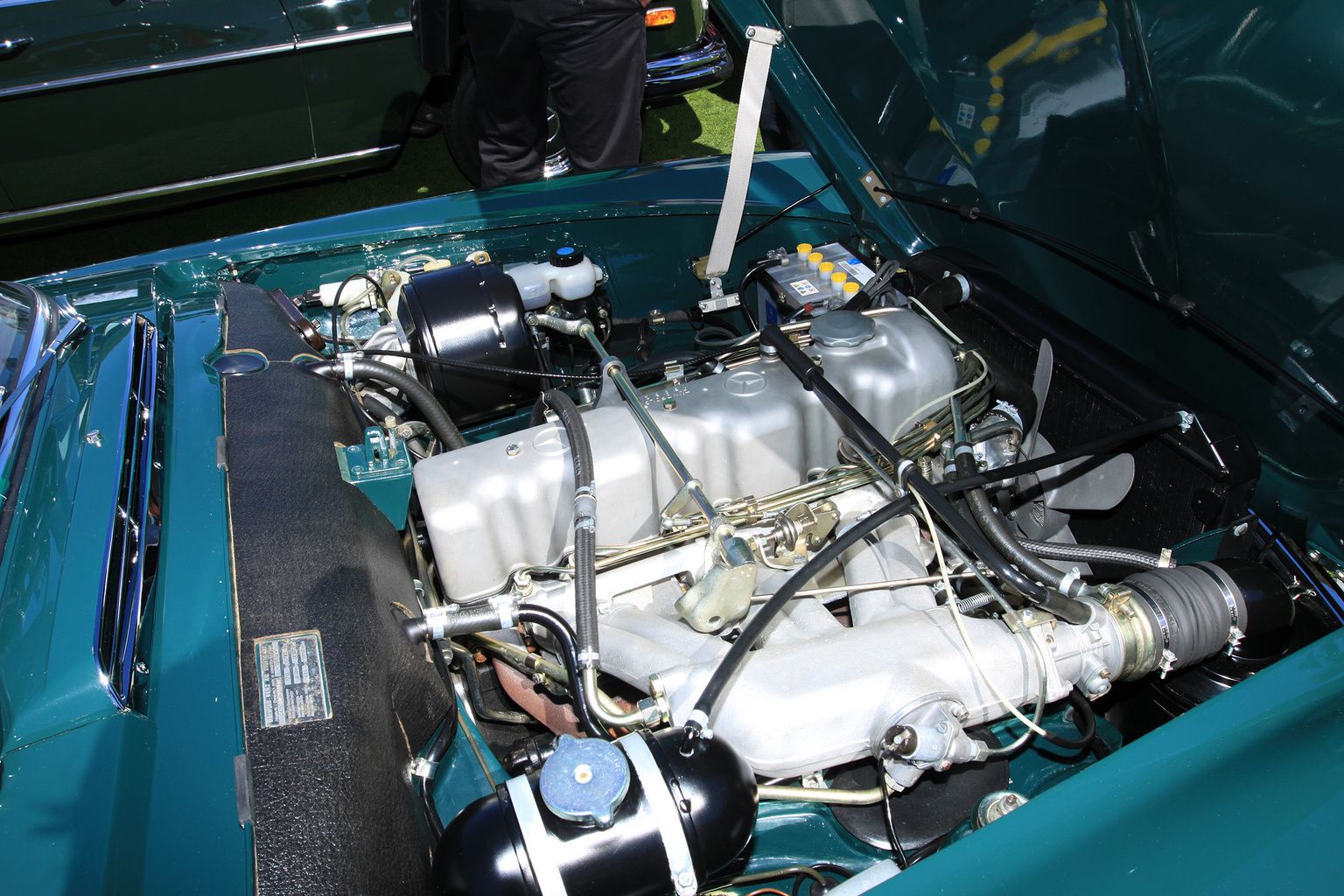German car-making giants, Mercedes-Benz, have always been recognized for the consistent output of high-quality, good-looking luxury vehicles. Ever since the beginning, Mercedes has been able to guarantee these all-important factors without stumbling, and that’s why you see so many of their models on the road even though most of them command hefty prices.
In 1963, Mercedes-Benz presented the W113 with the 230 SL as its first iteration. Known also as the Pagoda thanks to its body styling, the W113 was a beautiful two-seater convertible with plenty to like about it, and it instantly became highly desirable amongst high-class buyers. Even today, the SL model still lives in the form of an AMG, and it's nuts.
The 230 SL was built until January 1967, and one month later, Mercedes announced its successor, the 250 SL, which would end up being the middle brother of the W113 SL family after the future release of the 280 SL only 14 months later. The 250 SL made some fruitful improvements over the 230 despite its short-lived production run; here’s why we love it so much.
The 250 SL Is A Joy to Drive
Let’s get things straight, the Mercedes-Benz SL models were never meant to be high-performance race-able cars that could beat just about anything off the stoplight, but they weren’t slow either. The objective was somewhere in between, as the SL sought to provide a comfortable cruise with a decent kick, aided by great RWD handling and the sweet sensation of a cool breeze as you sped down backroads with the roof down.
The previous 230 SL offered a similar experience, but several noticeable changes were made to the SL’s engine for the 250, and it got a whole lot better. The first upgrade is revealed in the name, as the 2.3-liter inline-six from the 230 SL was upgraded to a 2.5-liter inline-six. Even though horsepower output remained unchanged at 150, the larger engine provided increased torque for a total of 159 pound-feet that could be achieved at a wider rev range. This allowed the 250 SL to run smoothly from 0-60 in 9.5 seconds
Finally, further upgrades made for the 250 SL included disc brakes on all four wheels with the ones up front seeing an increase in size, and a bigger fuel tank with a capacity of 82 liters instead of the 230s 65-liter tank.
The 250 SL Is Stunning
The W113 is timelessly gorgeous, there’s simply no other way to put it. Mercedes-Benz truly hit it out of the ballpark with the SLs exterior, as they managed to make it simple yet effortlessly elegant, keeping away from over-the-top design cues and staying true to their sleek German ways.
In front, the 250 SL - which was pretty much identical to the 230 and future 280 SL in terms of exterior looks, features a long hood that stays flat until sloping down towards a slim and long front grill. A pair of large oval headlights spawn from the vehicle’s fenders, which stick out from the hood to add depth, and a chrome lip ties together the final look of the SL’s face.
The side of the Mercedes-Benz 250 SL is relatively simple, featuring an almost perfectly-rectangular shape with a few chrome inserts and not much more. Finally, the rear of the 250 somewhat imitates the front, with a long trunk lid and slightly bulkier fenders that slope downwards to meet with a pair of rectangular taillights. A pair of chrome bumpers and dual chrome exhaust tips are the finishing touches of the SL 250s gorgeous design.
Instant Icon: The 250 SL From Mercedes-Benz Is Worth A Lot Today
As soon as it was launched, the W113 quickly gained high regard amongst consumers, but what about today? When it comes to classics, rarity is most certainly one of the most important factors to determine value, and that’s why the Mercedes-Benz 250 SL is more special than its predecessor and also its successor.
Around 19,800 units of the MB 230 SL were sold during its 4-year production run, and nearly 24,000 280 SLs were sold from 1968 to 1971. These production numbers were quite healthy considering the extravagance and pricing of the models in question, and that means that finding one today isn’t too difficult or expensive. The same can’t be said for the 250 SL, however. Only 5,196 units of the 250 were sold during its 14-month production run, making it far rarer than its brothers nowadays. As a result, it’s also more expensive, and units today are usually sold for prices north of $85.000, with many exceeding the $100k mark and fully-restored versions climbing over $200,000.
Mercedes-Benz aced the W113 SL, which was the model’s second generation. All three versions were special, and they played a massive role in the evolution of future SL models that led to what the German automaker offers today.




